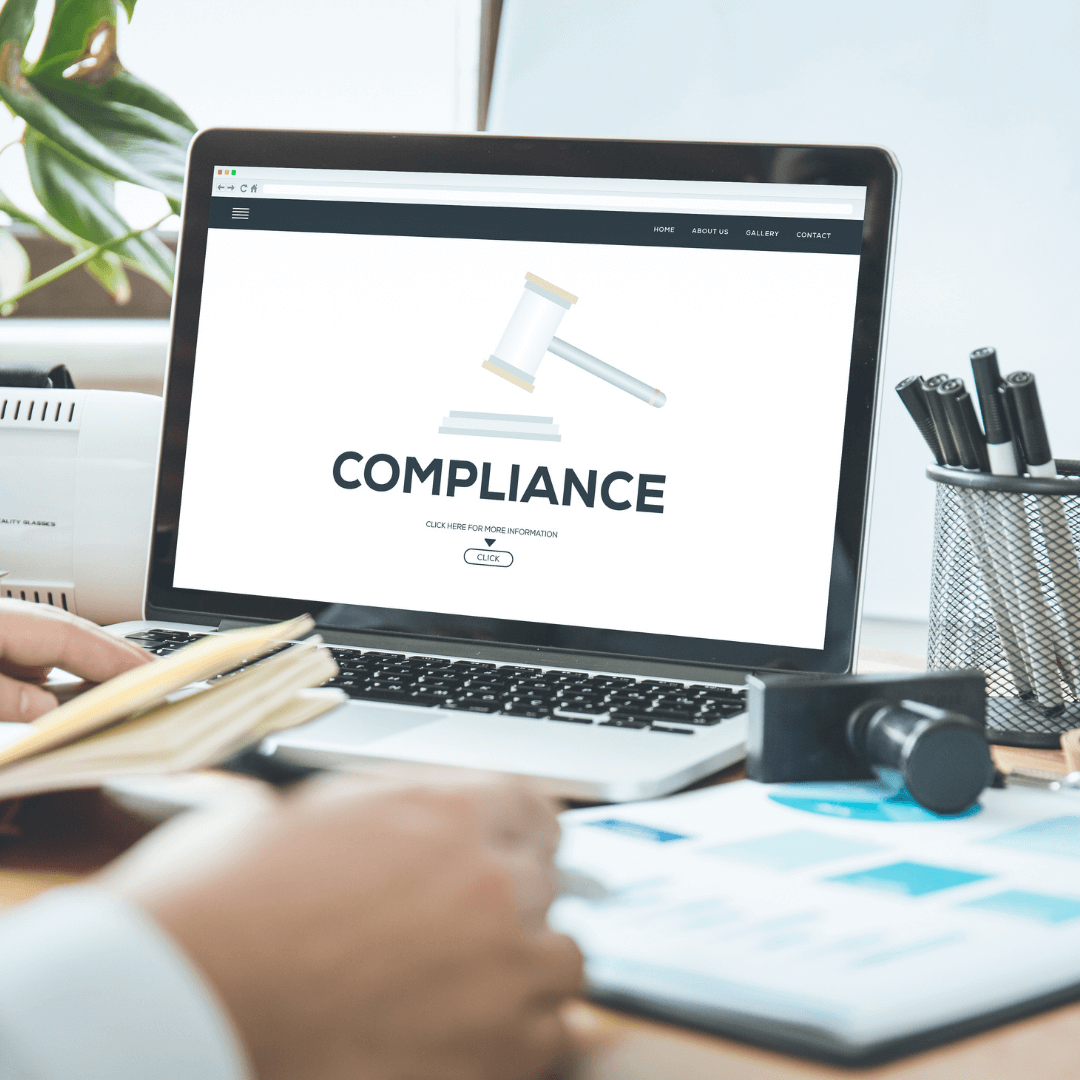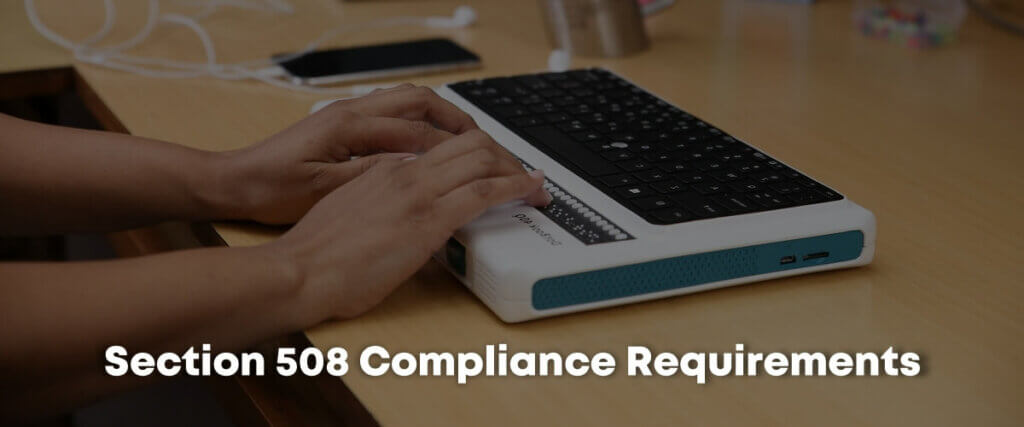In 1998, the Rehabilitation Act required Federal agencies to make their electronic Information and Communication Technology (ICT) accessible to people, employees, and members who are people with disabilities. This is also when Section 508 of the Act (U.S.C.) was enacted, mainly to eliminate barriers, create new opportunities, and encourage the development of new technologies for people with disabilities.
The law applies to all Federal agencies and the way they develop, procure, maintain or use electronic and information technology. Under Section 508, agencies must give disabled employees and members of the public access to information that is comparable to the access that is available to others.
Section 508 has been in place for over 15 years, allowing Federal agencies to use content that can be accessed by the public, as well as employees with disabilities. The rule addresses legal compliance through the process of market research and Federal government procurement but also has standards against which products can be evaluated to determine if they need technical compliance.
The U.S. Access Board is the body responsible for developing the Information and Communication Technology (ICT) accessibility standards, resources, and guidelines that govern Federal procurement practices.

Electronic And Information Technology (EIT)
Electronic and Information Technology (EIT) is covered as part of Section 508. The rules are procured by a federal agency under contract with a private entity, or produced within the agency itself. The set of regulations applies to all Electronic and Information Technology (EIT) including websites, web applications, software and hardware applications, and other types of electronic office equipment.
Federal agencies were asked to use electronic and information technology (EIT) in the form of “any equipment or interconnected system or subsystem of equipment that is used in the automatic acquisition, storage, manipulation, management, movement, control, display, switching, interchange, transmission, or reception of data or information.”
The Section 508 Rehabilitation Act – Refresh (2017)
In 2017, the information and communication technology ICT standards and guidelines that were previously created by the U.S. Access Board in the 508 Section were updated (in what got known as the “Section 508 Refresh” or just “The Refresh”) and published in the Federal Register. The Federal government revised many standards and guidelines to modernize their approach and unify them with the international voluntary consensus standards and Section 255 of the Telecommunications Act.
Logically, the updated standards have been revised by the Access Board so that they reflect any changes in the technology landscape. Section 508 Refresh maintains the structure of the requirements with any technical and functional standards but arranges the standards around products and services’ features (instead of types of products).
The 508 Refresh rule updated and reorganized a lot of resources from the Section 508 Standards and Section 255 Guidelines, responding to the current market trends, development, and innovations in technology. The report also harmonized the requirements with other guidelines, making communications clearer for users in the US and abroad.
Information And Communication Technology (ICT)
Section 508 of the Rehabilitation Act revised standards are harmonizing the international standards, one of which is the Web Content Accessibility Guidelines 2.0 (WCAG 2.0). This means that Section 508 uses WCAG 2.0 to measure the compliance of any documents, web content, and software. For the majority of software and mobile apps, the W3’s Guidance on applying WCAG 2.0 to non-web ICT needs to be taken into consideration.
All federal agencies were asked to comply with the Section 508 standards by January 2018, which is a date that marks one year since the standards were published. If information and communication technology ICT is altered in a way that affects the user interface, data, or interoperability, revised standards will be put in place.
Qualifications Of The Section 508 Law
There have been a couple of qualifications of the Section 508 law. Namely, they include the following:
- Federal agencies can be in legal compliance but still not meet technical standards imposed by the federal government. There are exceptions for national security, alterations of key requirements, or maintenance access.
- Section 508 requires that all Federal information that is electronically accessible, must also be accessible for individuals with disabilities.
- Under the Rehabilitation Act of 1973, all federal agencies need to provide individuals with disabilities with reasonable accommodation.
- Some users may need certain software and systems to be able to access certain information.
- People with disabilities should not use specific wording when putting in an accommodation request (when applying for a job). Instead, an agency should process all requests and handle the communications.
For the incorporation of standards, the Federal Acquisition Regulatory Council will revise the procurement policies and directives under the control of the department or agency to incorporate the standards. A timeframe of no later than 6 months is proposed for the Federal Acquisition Regulation to revise the policies and directives, as necessary, to incorporate any revisions.

Summary Of The Section 508 Standards
The guidelines of Section 508 rules propose the following rules for the use of electronic and information technology:
- Software, apps, and operating systems: Accessibility is needed to software, and keyboard navigation & focus is supplied by web browsers.
- Web-based Intranet and Internet Information and Applications: This is where web content accessibility is assured (for example, any text description on websites that users with a disability need assistive technology with). This includes screen readers, Braille displays, etc.
- Telecommunications Products: Accessibility for all telecommunications products is required by the Federal Government. Individuals with disabilities need to be compatible with hearing aids, assistive listening devices, and telecommunications devices for the deaf.
- Videos or Multimedia Products: Requirements are set for captioning and audio descriptions of multimedia products such as training or informational multimedia productions.
- Self-contained and closed products: These include products where end users cannot add or connect their own assistive technologies (including information kiosks, copiers, fax machines, etc.). The standard requires that certain features are built into these systems.
- Desktop and portable computers: Standardized ports and mechanically operated controls should be used across keyboards and touch screens.
Guidance On Compliance With Section 508 Refresh
Section 508 of the Rehabilitation Act has been restructured around the use of products and services, compared to types of products or services. This was one of the main changes made in Section 508 Refresh, mostly considering modern technology and the way it combines different functionalities in one product or service.
The restructured rules and guidelines evaluate the products or services based on the features they have, compared to their identity. The motto of “develop procure maintain” was used in all rules.
While some functional performance criteria have been updated in Section 508 of the Rehabilitation Act, there have been a couple of new ones added (color perception, limited reach, and strength are some of them). A set of functional criteria has also been related to cognitive disabilities.
However, this set of functional performance criteria needs to be applied only when a technical standard can’t be met or there is no applicable technical standard.
Electronic Documents
Making technology accessible to people is important nowadays. The Section 508 standards also take electronic documents into account, covering them under the previous standards. With the current Section 508 requirements, any coverage of electronic content is limited to certain categories of information that are communicated by employees, agencies, or members of the general public during the conduct of official business.
The covered categories that are part of the Section 508 standards are based on the WCAG 2.0 A and AA conformance requirements, and include the following:
- Content that is public-facing or disseminated with the agency (websites, blog posts, social media posts, emails, etc.)
- Letters that adjudicate cause within the jurisdiction of the agency
- Internal and external program and policy announcements
- Notices of benefits, employment opportunities, program eligibility, personnel action
- Surveys and questionnaires
- Forms and templates
- Emergency notifications
- Formal receipts or acknowledgments
- Educational and/or training materials
- Intranet website content (in the form of a web page)
There are two exceptions to the covered content, which include:
- archival copies retained for preserving the actual image of a hard copy, and
- draft versions of documents (draft content will be addressed in Section 504 of the Rehabilitation Act as an accommodation)
Final Thoughts
As we said in the beginning, Section 508 is a law that protects individuals with disabilities, enforcing agencies to give disabled employees and members of the public access to information that is comparable to the access that is available to others.
All federal agencies must comply with this rule and follow the standards developed by the Access Board. All website content must be accessible according to the guidelines, pointing out all and any related disabilities.
CONTACT ADA SITE COMPLIANCE today for all your website accessibility needs!
Share via:

Speak With An Expert Now
Have a question?
We’re always here to help.
The ADA prohibits any private businesses that provide goods or services to the public, referred to as “public accommodations,” from discriminating against those with disabilities. Federal courts have ruled that the ADA includes websites in the definition of public accommodation. As such, websites must offer auxiliary aids and services to low-vision, hearing-impaired, and physically disabled persons, in the same way a business facility must offer wheelchair ramps, braille signage, and sign language interpreters, among other forms of assistance.
All websites must be properly coded for use by electronic screen readers that read aloud to sight-impaired users the visual elements of a webpage. Additionally, all live and pre-recorded audio content must have synchronous captioning for hearing-impaired users.
Websites must accommodate hundreds of keyboard combinations, such as Ctrl + P to print, that people with disabilities depend on to navigate the Internet.
Litigation continues to increase substantially. All business and governmental entities are potential targets for lawsuits and demand letters. Recent actions by the Department of Justice targeting businesses with inaccessible websites will likely create a dramatic increase of litigation risk.
Big box retailer Target Corp. was ordered to pay $6 million – plus $3.7 million more in legal costs – to settle a landmark class action suit brought by the National Federation of the Blind. Other recent defendants in these cases have included McDonald’s, Carnival Cruise Lines, Netflix, Harvard University, Foot Locker, and the National Basketball Association (NBA). Along with these large companies, thousands of small businesses have been subject to ADA website litigation.
Defendants in ADA lawsuits typically pay plaintiff's legal fees, their own legal fees for defending the litigation, and potential additional costs. In all, the average cost can range from tens of thousands of dollars, to above six figures. There are also high intangible costs, such as added stress, time and human capital, as well as reputational damage. Furthermore, if the remediation is incomplete, copycat suits and serial filers can follow, meaning double or triple the outlay. It's vital to implement a long-term strategy for ensuring your website is accessible and legally compliant.



